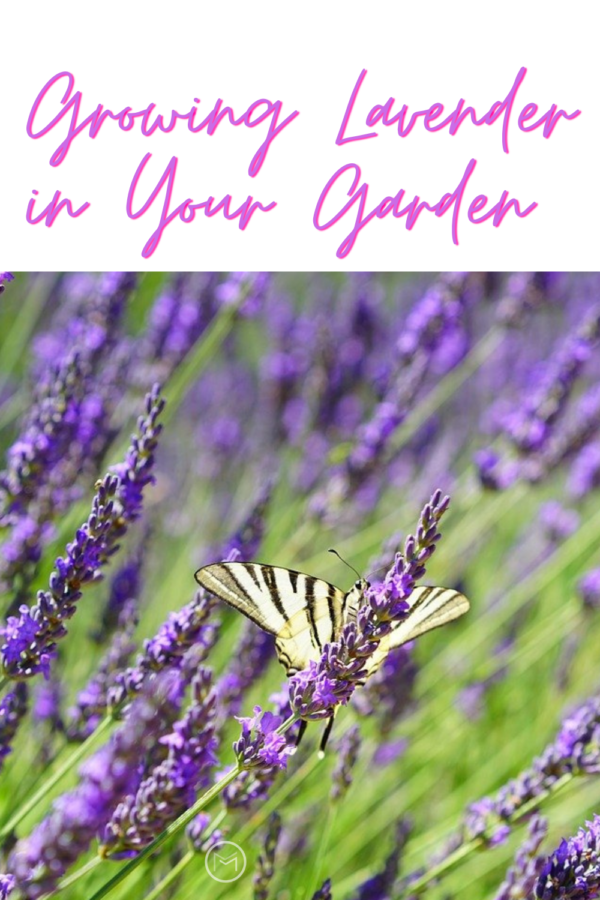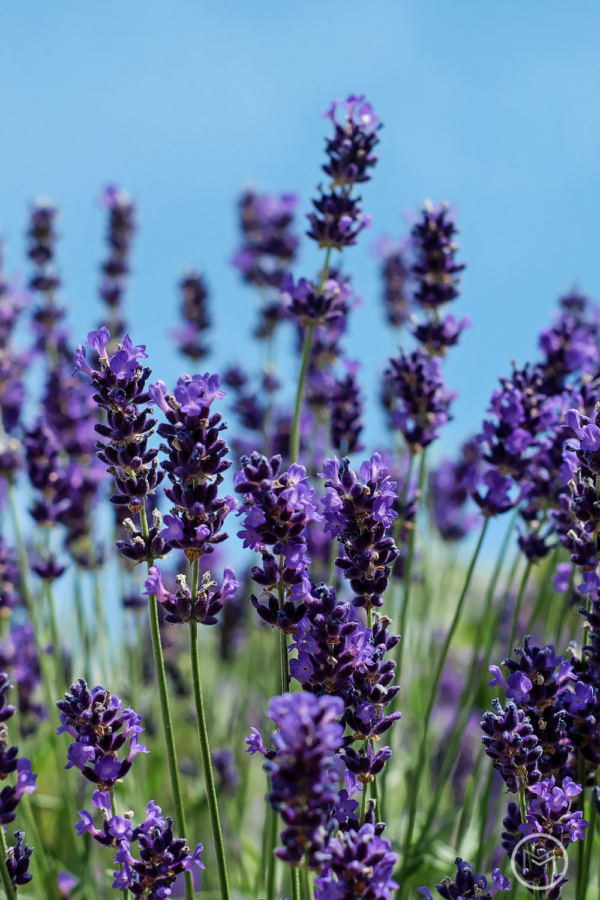Today, I’m sharing gardening advice on growing lavender in your garden. Our flower and vegetables gardens will be dormant soon. Fall is here and winter is around the corner. As a result, I use winter to plan my spring and summer gardens as well as winter sow my garden seeds.
I decided to add a pollinator garden along one of fence lines this year. Lavender has found a spot in the garden. It’s great for attracting butterflies and bees and smells heavenly. Use lavender for sugar scrubs, lip balms, whipped creams, sachets and more. The scent alone is worth a few plants, but the DIY sugar scrubs, lip balms and creams are an added bonus for growing it.

If you decide to plant lavender in your garden here are a few things that you should know before you plant:
- Lavender should be planted in full sun and well drained soil.
- Cut the plant back after it flowers. Cutting it back prevents the plant from becoming woody. Don’t prune the plant after August though. If you don’t get it pruned before August, wait until spring. It’s a great time for pruning.
- Plants should be spaced apart to ensure each has good air circulation. Be sure to read your plant label or do your research if you grow your own.
- Compost or organic plant food is sufficient for lavender. There’s no need for fertilizer.
- Water regularly the first year.
- Established plants can tolerate dry, hot conditions.
- If you plant in pots, don’t use a saucer beneath it. Standing water can cause root rot.
Note: I am an Amazon Associate. If you click on any of the products or purchase, I may be compensated a small fee. However, there will be no additional cost to you.
Note: I am an Amazon Associate. If you click on any of the products or purchase, I may be compensated a small fee. However, there will be no additional cost to you.
Growing Lavender in Your Garden
English Lavender – The English Lavender is a classic. If you’re thinking of growing lavender in your garden, consider English Lavender. It is a smaller variety, more compact and has a strong, sweet aroma. The stems are long with deep purple flowers. This variety is great for cooking, crafts and dried flower arrangements. I garden in zone 6B, so the English lavender is perfect for our freezing winter temperatures. It is also the easiest variety to find at your local garden centers. Most plants will grow up to 1 – 4 feet. If you don’t have a large garden the Petite Sweet Romance plant is perfect for containers. These varieties include Hidcote, Little Lottie, Ladyann and Lullaby Blue.

French Lavender – French Lavender is perfect for humid climates. French lavender has a silver-gray color and is perfect in potpourri, crafts and sachets. They produce pale lavender blooms in the spring. Most plants will grow up to 2 to 4 feet.
Spanish Lavender – Spanish Lavender is a great plant for hot, dry areas. And, it resists fungus diseases as a result of the humidity. This particular plant grows from 1 to 4 feet, so it’s perfect for an upfront spot in your border. If you remove the spent blooms, the plant will bloom a second time.
Good companion plants for lavender are rosemary, thyme, verbena, salvia and sedum. Surround your lavender plants with any of the above and they will love you for it. Order a few seed packets or visit your garden center in the spring for a few plants. You won’t be disappointed. You may also like The Benefits of Lavender in Your Backyard Garden.




